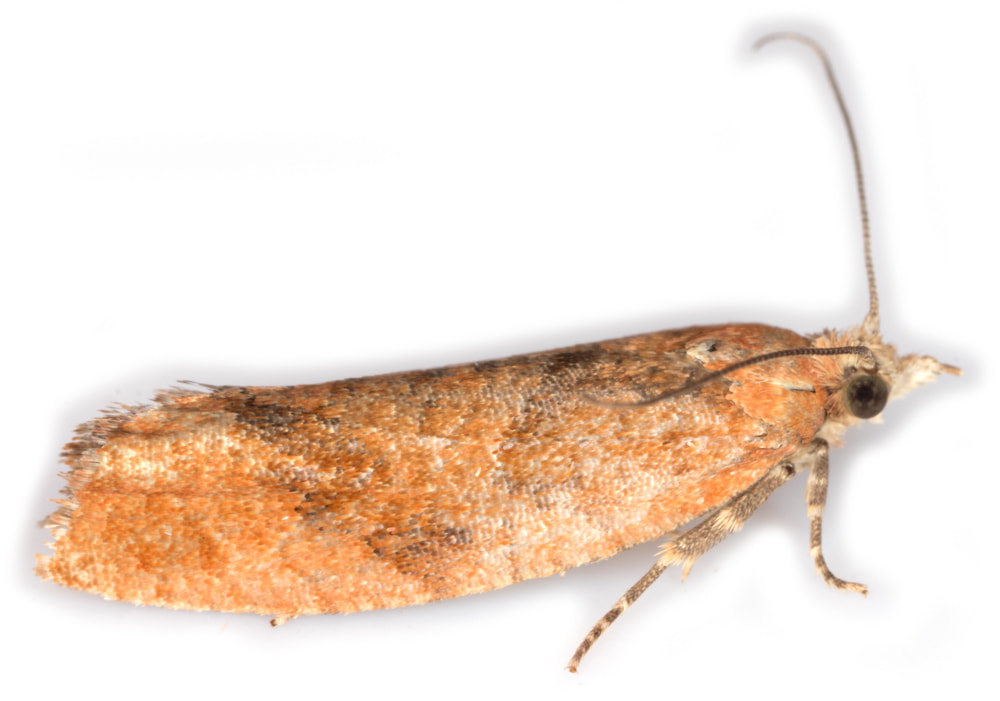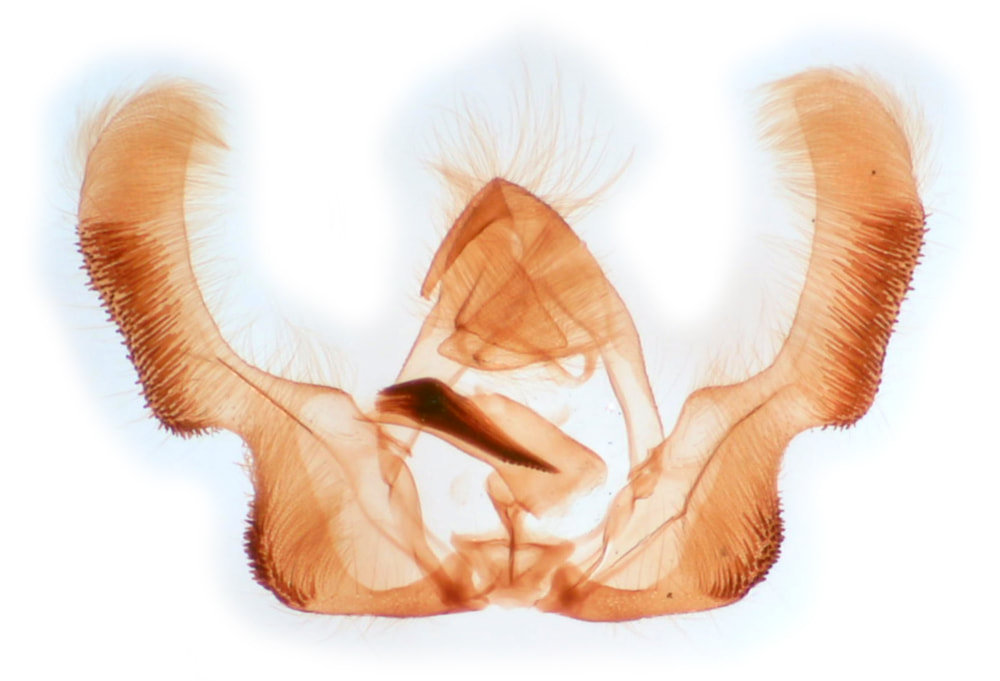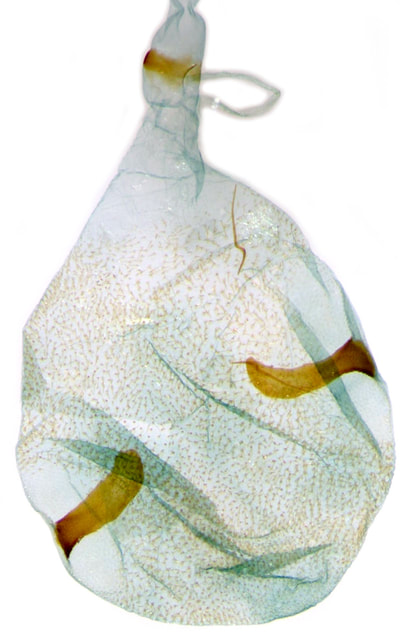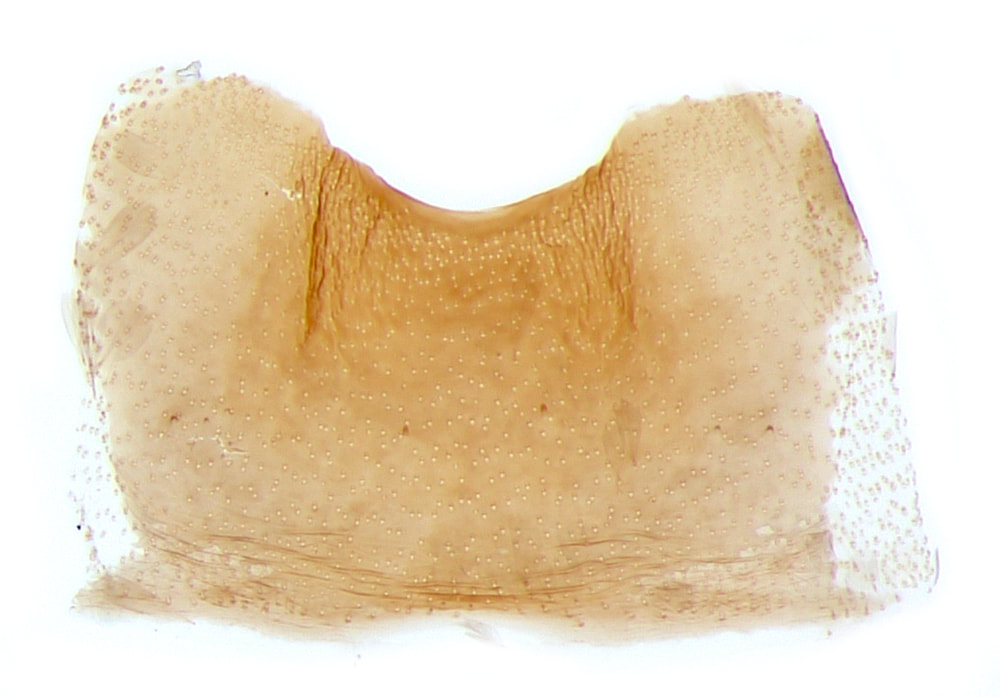49.233 Epinotia solandriana (Varied Birch Roller)
ws: 16-21mm (BTM), fw 7.5-10.0mm (Sterling & Parsons); Jul-Aug; birch (Betula spp), hazel (Corylus avellana), goat willows (Salix caprea); common throughout GB
ID: Very variable. The nominate form has a distinctive elongate-semiovate dorsal blotch; the various forms with fasciate markings, however, are similar to E.maculana, E.sordidana, E.caprana and E.brunnichana and require genital dissection for confident identification.
In separating fasciate forms of E.solandriana from similar forms of E.brunnichana, both MBGBI5.2 and BTM mention that the the dorsal blotch is triangular in E.solandriana and subquadrate or trapezoid in E.brunnichana - but I have not (yet) found this distinction easy to determine.
The following features are mentioned as useful in MBGBI5.2:
E.maculana: small brown triangular mark on dorsum at ¼
E.sordidana: drab, lacking a definite pattern
E.caprana: hindwing pale creamy brown with pale creamy brown basal ciliary line and darker "outer" cilia
E.solandriana: dorsal blotch triangular with proximal margin at 45-55° to base and apex sharp
E.brunnichana: dorsal blotch trapezoid with proximal margin at 56-65° to base and apex flattened
In the (appallingly poor) plates in MBGBI5.2 (Plate 33 for all except E.solandriana which is helpfully! placed on Plate 34), the outer dark ciliary line can only be seen in one of the 3 E.caprana images - the absence of a dark basal ciliary line may be the more helpful feature.
E.solandriana and E.brunnichana are both very variable and the margins of the dorsal blotch may be poorly defined making judgements on the distinction between 'triangular' and 'trapezoid' imprecise. It is also not entirely clear from the description in MBGBI5.2 which end is the "apex" of the dorsal blotch, but I think it is the distal end. And I am not at sure how one measures the angle the proximal margin makes with the wing base - surely the angle with the dorsum would be easier to judge - in which case there is no difference between §1 (62° and my 3 forewing preparations of E.brunnichana (§1,3&5 - 60, 65 & 70°)
Female genitalia: Illustrated in MBGBI5.2 (fig 253) and shown at Moth Dissection, the latter with some description of the distinction with E.brunnichana. Features for E.solandriana given first: 1) Sterigma wider and flat-"topped" vs narrower and usually notched; 2) Signa in anterior half (cranial, bottom in usual presentation) of the corpus bursae and orientated more-or-less transversely vs one signum in posterior half, one in anterior half and both orientated at 45°. Both of these distinctions are to some extent problematic:
1) The sterigma (ostial plate) has connected posterodorsal (lamella postvaginalis) and anteroventral (lamella antevaginalis) components; it is the posterior margin of the posterodorsal component that is supposed to be flat vs notched. The apparent width will vary with degree of compression and the posterior margin is somewhat irregular in both species, so that a clear distinction on this feature can only be made with confidence when the plate is distinctly notched (assuming this is a valid feature). I have observed in my own material (assuming they are correctly identified) that the lamella antevaginalis is noticeably deeper in E.solandriana - but this feature is not clearly demonstrated by all the images labelled as E.solandriana at Moth Dissection.
2) There is a potential confusion in the determination of "transverse" in specimens where the ductus bursae is kinked such that the long axis of the corpus bursae is not in the long axis of the abdomen - I believe it is the long axis of the corpus bursae that is relevant here - but it this is not always easy to determine in unmated specimens (see illustrations below).
In separating fasciate forms of E.solandriana from similar forms of E.brunnichana, both MBGBI5.2 and BTM mention that the the dorsal blotch is triangular in E.solandriana and subquadrate or trapezoid in E.brunnichana - but I have not (yet) found this distinction easy to determine.
The following features are mentioned as useful in MBGBI5.2:
E.maculana: small brown triangular mark on dorsum at ¼
E.sordidana: drab, lacking a definite pattern
E.caprana: hindwing pale creamy brown with pale creamy brown basal ciliary line and darker "outer" cilia
E.solandriana: dorsal blotch triangular with proximal margin at 45-55° to base and apex sharp
E.brunnichana: dorsal blotch trapezoid with proximal margin at 56-65° to base and apex flattened
In the (appallingly poor) plates in MBGBI5.2 (Plate 33 for all except E.solandriana which is helpfully! placed on Plate 34), the outer dark ciliary line can only be seen in one of the 3 E.caprana images - the absence of a dark basal ciliary line may be the more helpful feature.
E.solandriana and E.brunnichana are both very variable and the margins of the dorsal blotch may be poorly defined making judgements on the distinction between 'triangular' and 'trapezoid' imprecise. It is also not entirely clear from the description in MBGBI5.2 which end is the "apex" of the dorsal blotch, but I think it is the distal end. And I am not at sure how one measures the angle the proximal margin makes with the wing base - surely the angle with the dorsum would be easier to judge - in which case there is no difference between §1 (62° and my 3 forewing preparations of E.brunnichana (§1,3&5 - 60, 65 & 70°)
Female genitalia: Illustrated in MBGBI5.2 (fig 253) and shown at Moth Dissection, the latter with some description of the distinction with E.brunnichana. Features for E.solandriana given first: 1) Sterigma wider and flat-"topped" vs narrower and usually notched; 2) Signa in anterior half (cranial, bottom in usual presentation) of the corpus bursae and orientated more-or-less transversely vs one signum in posterior half, one in anterior half and both orientated at 45°. Both of these distinctions are to some extent problematic:
1) The sterigma (ostial plate) has connected posterodorsal (lamella postvaginalis) and anteroventral (lamella antevaginalis) components; it is the posterior margin of the posterodorsal component that is supposed to be flat vs notched. The apparent width will vary with degree of compression and the posterior margin is somewhat irregular in both species, so that a clear distinction on this feature can only be made with confidence when the plate is distinctly notched (assuming this is a valid feature). I have observed in my own material (assuming they are correctly identified) that the lamella antevaginalis is noticeably deeper in E.solandriana - but this feature is not clearly demonstrated by all the images labelled as E.solandriana at Moth Dissection.
2) There is a potential confusion in the determination of "transverse" in specimens where the ductus bursae is kinked such that the long axis of the corpus bursae is not in the long axis of the abdomen - I believe it is the long axis of the corpus bursae that is relevant here - but it this is not always easy to determine in unmated specimens (see illustrations below).
§1 Orlestone Forest, Kent; 26/07/2018; female; fw 9.6mm; to light
§2 Foulden Common, Norfolk; 29/06/2017; male; fw 9.6mm
§3 Orlestone Forest, Kent; 16/08/2023; female; fw 9.4mm
All images © Chris Lewis
§2 Foulden Common, Norfolk; 29/06/2017; male; fw 9.6mm
§3 Orlestone Forest, Kent; 16/08/2023; female; fw 9.4mm
All images © Chris Lewis
Page published 06/08/2018 (§1) | §2 added 18/07/2023 (previously mis-identified as E.brunnichana) | §3 added and text amended 22/12/2023



















